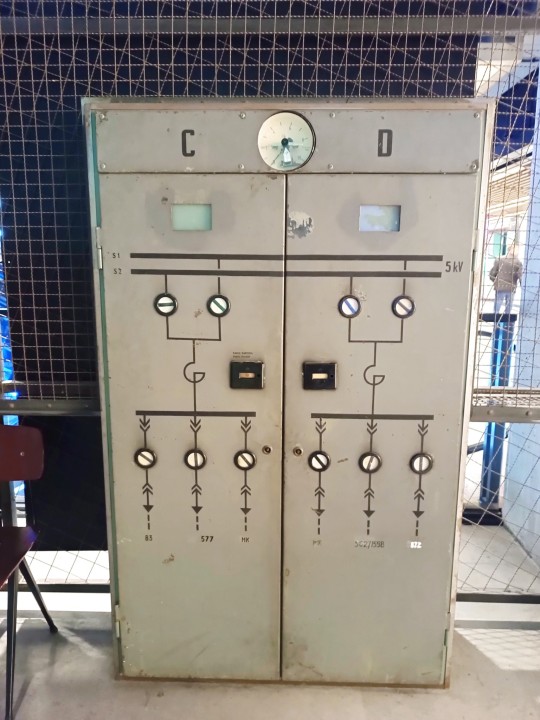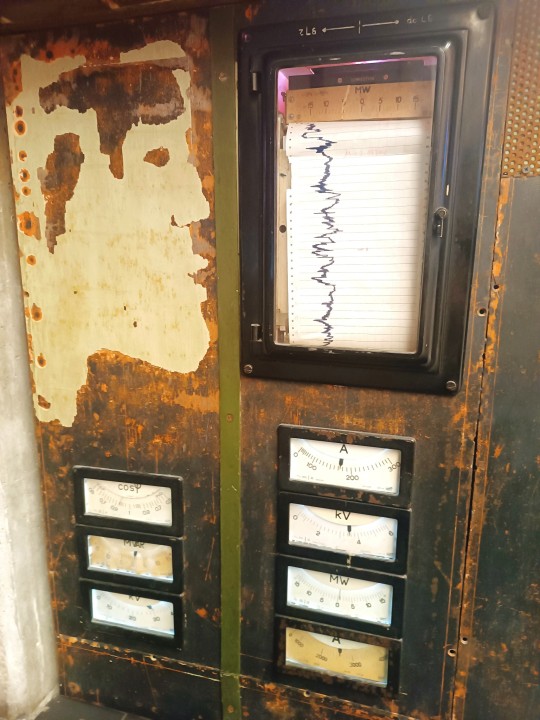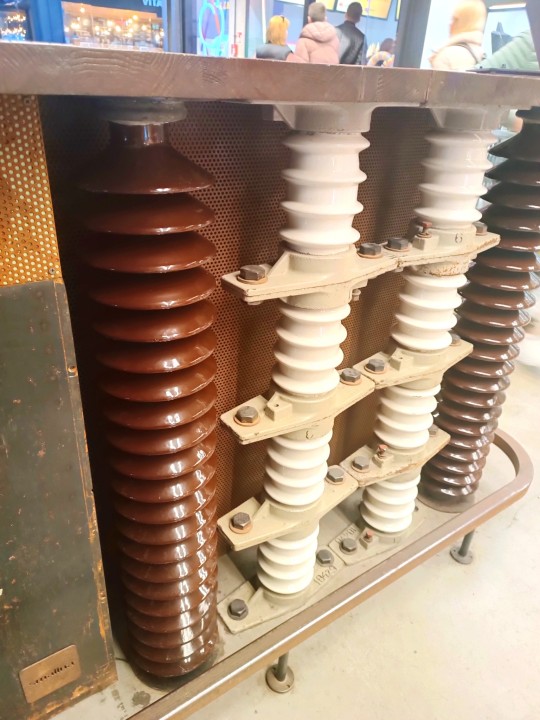#Coal Power Plants
Explore tagged Tumblr posts
Text
Britain’s reliance on coal-fired power set to end after 140 years
Closure of final plant at the end of September marks a critical step in decarbonising electricity by 2030
#good news#britain#coal power#coal power plants#greenhouse gases#fossil fuels#environmentalism#science#environment#climate change#climate crisis#climate action
55 notes
·
View notes
Text
Gas vs. Coal Power Plants: Which is Better for the Environment?

As the world grapples with the urgent need to reduce greenhouse gas plants emissions and combat climate change, the debate over energy sources has never been more critical. Among the most widely used energy sources are natural gas and coal, both of which play significant roles in global electricity generation. But when it comes to environmental impact, which is the better option: gas or coal power plants? In this blog, we’ll compare the two, examining their environmental footprints, efficiency, and long-term sustainability.
1. Carbon Emissions: The Climate Change Factor
One of the most significant environmental concerns surrounding power generation is carbon dioxide (CO₂) emissions, a major contributor to global warming.
Coal Power Plants: Coal is the most carbon-intensive fossil fuel. When burned, it releases large amounts of CO₂ into the atmosphere. On average, coal plants emit about 2.2 pounds of CO₂ per kilowatt-hour (kWh) of electricity generated.
Gas Power Plants: Natural gas is a cleaner-burning fuel. When used in modern combined-cycle power plants, it emits roughly 50-60% less CO₂ than coal, averaging about 0.9 pounds of CO₂ per kWh.
Verdict: Natural gas is the clear winner in terms of carbon emissions, making it a better choice for reducing greenhouse gas emissions.
2. Air Pollution and Public Health
Beyond CO₂, power plants emit other pollutants that can harm air quality and public health.
Coal Power Plants: Coal combustion releases harmful pollutants like sulfur dioxide (SO₂), nitrogen oxides (NOₓ), particulate matter (PM), and mercury. These pollutants contribute to smog, acid rain, respiratory illnesses, and cardiovascular diseases.
Gas Power Plants: Natural gas combustion produces significantly lower levels of these pollutants. While it still emits NOₓ, the quantities are much smaller, and it releases almost no SO₂ or particulate matter.
Verdict: Natural gas is far less polluting than coal, making it a healthier option for communities near power plants.
3. Water Usage and Contamination
Water is a critical resource in power generation, and both coal and gas plants have environmental impacts in this area.
Coal Power Plants: Coal plants consume vast amounts of water for cooling and steam production. Additionally, coal mining and combustion can lead to water contamination through the release of heavy metals and toxic chemicals.
Gas Power Plants: Natural gas plants use less water than coal plants, especially in combined-cycle configurations. However, the extraction process (e.g., fracking) can pose risks to water quality if not managed properly.
Verdict: Natural gas is generally less water-intensive, but responsible extraction practices are essential to minimize environmental risks.
4. Land Use and Habitat Disruption
The extraction and operation of power plants can disrupt ecosystems and habitats.
Coal Power Plants: Coal mining, particularly surface mining, can lead to deforestation, habitat destruction, and soil erosion. Coal ash disposal also requires significant land area and can contaminate surrounding environments.
Gas Power Plants: Natural gas extraction, especially through fracking, can disrupt local ecosystems. However, gas plants themselves have a smaller physical footprint compared to coal plants.
Verdict: Both energy sources have land use challenges, but natural gas plants generally have a smaller operational footprint.
5. Efficiency and Energy Output
Efficiency plays a key role in determining the environmental impact of power plants.
Coal Power Plants: Traditional coal plants are relatively inefficient, converting only about 33-40% of the energy in coal into electricity.
Gas Power Plants: Modern combined-cycle gas plants are highly efficient, converting 50-60% of the energy in natural gas into electricity. This higher efficiency means less fuel is needed to produce the same amount of power, further reducing emissions.
Verdict: Natural gas plants are more efficient, making them a more sustainable option in terms of energy use.
6. Methane Emissions: A Concern for Natural Gas
While natural gas is cleaner than coal, it’s not without its environmental challenges. Methane (CH₄), the primary component of natural gas, is a potent greenhouse gas—up to 84 times more effective at trapping heat than CO₂ over a 20-year period. Leaks during extraction, transportation, and storage can offset some of the climate benefits of natural gas.
Verdict: Methane emissions are a significant concern for natural gas, but with proper monitoring and technology, these leaks can be minimized.
7. Long-Term Sustainability
As the world transitions to renewable energy, the role of fossil fuels is being reevaluated.
Coal Power Plants: Coal is increasingly seen as a relic of the past. Many countries are phasing out coal plants due to their high emissions and environmental impact.
Gas Power Plants: Natural gas is often viewed as a "bridge fuel" that can support the transition to renewables. Its flexibility and lower emissions make it a viable complement to wind and solar energy.
Verdict: Natural gas is better positioned to support a sustainable energy future, but it is not a long-term solution on its own.
Conclusion: Gas is Cleaner, but Renewables are the Future
When comparing gas and coal power plants, natural gas is undeniably the better option for the environment. It produces fewer emissions, less air pollution, and is more efficient. However, it’s important to recognize that natural gas is still a fossil fuel and not a permanent solution to climate change.
The ultimate goal should be to transition to renewable energy sources like wind, solar, and hydropower, which have minimal environmental impact. In the meantime, natural gas can play a crucial role in reducing emissions and supporting the global shift toward cleaner energy.
Call to Action: What’s your take on the gas vs. coal debate? Do you think natural gas is a viable bridge to a renewable future, or should we focus entirely on renewables? Share your thoughts in the comments below! If you found this article helpful, don’t forget to share it with others who are passionate about energy and the environment.
#gas plants#Gas vs. Coal#Gas vs. Coal Power Plants#Solar Plants#Coal Power Plants#Gas Power Plants#Air Pollution#envirment protection#environment friendly#eco friendly#carbon emissions#solar energy#envirment#nuclear energy#stream energy#doe#power#electricity#renewable energy#electrical supply#direct energy#geothermal energy#wind energy#renewable resources#energy saver#green energy
0 notes
Text
1 note
·
View note
Text
You know one of the main reasons we should see polycules in fantasy stories? Consider settings where the ‘Power of Love’ is a real, tangible force.
Now just imagine the POWER a fully realized polycule could have.
Like we’ve seen just how much power can be generated by the love between a hero and a love-interest.
Now imagine if we take the love between the heroine and her GF, then add onto that the love between the heroine and her rival-turned-lover, AND the love between the rival and the aforementioned GF who are estranged childhood friends who have finally admitted their long-repressed feelings for each other.
Just turning a couple into a throuple potentially TRIPLES the number of potential love-generating links.
And that’s just with three people in a polycule.
A four-person polycule? That’s SIX times the potential power.
A five-person polycule is TEN times the power.
A six-person is FIFTEEN times.
You can see how this can get nutty VERY quickly.
Heck, imagine if in such a setting, the idea of polycules is initially ridiculed out of some belief that ‘love’ is some finite resource and a polycule is merely dividing up that power.
Only for the protag-polycule to prove this notion DEVASTATINGLY wrong.
#rambling#writing rambling#polycules#power of love#when it comes to the power of love#comparing a couple to a six-person polycule is like comparing a coal-fire steam engine to a multi-reactor nuclear power-plant
211 notes
·
View notes
Text
I think the current "renewables vs. nuclear" debate will be obsolete once widespread tidal/wave power and perhaps bioelectricity (something I need to research in depth) become widespread. You don't have to argue about the intermittence of renewables or the high cost of nuclear plants when waves are basically unexhaustible sources of power.
From an aesthetic perspective, in these past few years I've become enamoured of nuclear power and the sheer industrial might it has. But I think one must be pragmatic, it works as a "backbone" for an energy grid, but renewables are just so much cheaper and practical.
My slogan is blue-green power: Blue nuclear power (Cherenkov radiation) as a replacement for big fossil plants/hydro plants the "backbone" of energy grids, and green renewables of all kinds, depending on the environment, to power daily use.
#cosas mias#I'm sure there is a professional term for the word 'backbone' but it's the problem that Germany has for instance#when they had the stupid decision of closing nuclear plants#and now when there is intermitence they need to turn on coal and gas#if you have nuclear plants that can provide constant power you don't have this problem
71 notes
·
View notes
Text




Powiśle Power Plant 🏭, Warsaw
#aesthetic#cyberpunk#tech#tech aesthetic#technology#old tech#power plant#vintage#electricity#engineering#electrical engineering#industrial#electrical engineer#elektrostantsiyapost#power engineering#electrical energy#switchgear#generator#turbine#insulators#techwave#techcore#thermal power plant#coal power plant#circuits#power generation#warsaw#poland#powiśle power plant#decor
129 notes
·
View notes
Text
Excerpt from this story from CNN:
The smokestacks on the aging Sherco coal power plant tower over gleaming solar panels that stretch across thousands of acres of farmland.
The polluting coal plant is on its way out, scheduled for retirement in the next five years. It’s generated billions of dollars’ worth of electricity in its 50-year life, but the most valuable of its parts is the plug — how it connects to the grid that powers our homes.
Instead of letting it go to waste as the fossil fuel plant closes, Xcel Energy is going to leave it plugged in to connect the largest solar project in the Upper Midwest, and one of the largest in the entire country, directly to the grid.
Repurposing the so-called interconnection system is short-circuiting what could have been seven years of bureaucracy and red tape to get this electricity distributed to its customers.
Experts say this is the secret to solving America’s clean energy dilemma: There is more electricity from clean energy waiting to get connected to the grid than the entire amount of energy currently on the grid. The years-long delays are an existential threat to many projects’ chances of getting built.
The US could essentially double the capacity of its electrical grid overnight by plugging renewables projects into old fossil fuel power plants, University of California Berkeley researchers found, whether they be coal, gas or oil. And projects could be plugged into existing plants, not just ones that are retiring.
“This should be one of the main strategies that we adopt going forward, because we already have so many existing assets, so much grid infrastructure and we don’t want to just throw them away,” said Umed Paliwal, a senior scientist at UC Berkeley and a lead author of the study.
9 notes
·
View notes
Text
Internet Archive link (aka no paywall): https://web.archive.org/web/20230318235147/https://www.nytimes.com/2023/03/15/climate/epa-states-pollution-smog.html
"The Biden administration on Wednesday finalized a rule forcing factories and power plants in 23 Western and Midwestern states to sharply cut smog-causing pollution that is released from their smokestacks and fouls the air in Eastern states.
Known as the “good neighbor” rule, the new regulation strengthens and expands an earlier interstate air pollution standard that was enacted during the Obama administration. While that rule directed power plants to clean up their emissions, the revised rule enforces similar controls on mills, factories and other industrial facilities.
The Environmental Protection Agency is required by the Clean Air Act to periodically review and revise the rule. After failing do so during the Trump administration, it is now strengthening restrictions under a court-ordered deadline.
The good neighbor rule holds that states should take measures to ensure that their pollution doesn’t affect downwind states. It directs coal-burning power plants and industrial facilities such as iron, steel, cement and concrete manufacturers in the Western and Midwestern states to reduce their emissions of nitrogen dioxide, a pollutant that causes smog and is linked to asthma, lung disease and premature death...
“Every community deserves fresh air to breathe,” E.P.A. Administrator Michael S. Regan said. “We know air pollution doesn’t stop at the state line.”
The tighter rules on power plants will come into force later this year, while the new controls on factories and other industrial polluters will take effect in 2026.
The revised rule is one of a stack of climate and clean air regulations expected this year from the Biden administration, including stricter controls on planet-warming emissions from cars, trucks, power plants and oil and gas wells and mercury pollution from power plants. Collectively, they are designed to strengthen the clean air and climate protections that had been rolled back by the Trump administration, and to accelerate the nation’s transition away from fossil fuels and toward renewable energy.
The E.P.A. estimates that the updated good neighbor rule will cut emissions of nitrogen oxide in the affected states by 50 percent from 2021 levels by 2027, preventing 1,300 premature deaths, avoiding more than 2,300 hospital and emergency room visits, preventing 1.3 million cases of asthma and avoiding 430,000 lost school days and 25,000 missed work days..."
-via The New York Times, 3/15/23
Note: The NYT is disproportionately focused on the results to distant low-industry and often majority-white states, such as Delaware (I couldn't find a more comprehensive article on this, unfortunately). But these regulations will also have powerful impacts on areas and communities disproportionately affected by heavy industry by cutting emissions at the source, which will hopefully help to reduce the devastating impacts of environmental racism and protect communities that actually live next to these factories, not just hundreds of miles away.
#air pollution#cement#coal#coal mining#power plants#industrial pollution#environmental justice#nitrogen oxide#asthma#epa#environmental law#good news#hope
57 notes
·
View notes
Text
if u seek amy??? ok. but the guy im looking for is named bob. im going to a different gas station you are not helping me track this hee hee ha ha ho down.
#pov: you are agent spears fbi. it is 1998. youre on a deep undercover mission to bust a west virginia smuggling ring. youve driven into#the dead center of the state. your accent is flawless and your truck looks as beat up as any other flivver here. but everyone knows youre#a fed. somehow. place gives you the creeps. hollers permeated by a dead quiet#the scent of burning coal on the air carrying from miles away. power plant or coverup? thats what youre here to find out#this safeway guy is suspect. you asked the questions#and got out of there fast. some of those sandwiches had expired when the berlin wall was still up. not a good sign.
8 notes
·
View notes
Text
fun fact when we lived in cleveland we'd take this backroad to avoid the turnpike when heading to detroit to visit family
well the backroad goes past a nuclear power plant and I always had a fascination slash slight fear of the thing (my ocd is about disasters). we actually ended up behind a nuclear transport truck once which was cool
anyways I later found out that this nuclear plant is responsible for 2 out of the 5 most dangerous us nuclear accidents since 3 mile!
#☢️.txt#like damn bitch! apparently i was right!#(to be clear i wasnt- 3 mile wasnt nearly as dangerous as people perceived. accidents are normal and no one was harmed)#(nuclear power is safe and the nrc is strict about keeping tabs on accidents)#(also remember that every decommissioning of a nuclear plant is over coal and gas.)
4 notes
·
View notes
Text
12 notes
·
View notes
Text
Second political post of the day: remember when Biden was elected and all these random eurotrash and Canadian people were like “yay, welcome back, America, we can somewhat respect you again” only now our country is astronomically shittier than it was when the Orange guy was president? Hmmmm. Perhaps we shouldn’t care about what other countries think about us, yes, including our “allies”, because they do not have our best interests in mind. They just use us for our military so they can have free healthcare and free college education, only to shit on us constantly like the assholes they are
#the uk has had like 100 prime ministers within the last five years all of which have been shit so I don’t care about their opinions#the French are never happy with anyone they elect so maybe we shouldn’t listen to their bad judgement#Canada is literally a fucking joke of a country. how can a country with fewer people than California that’s near the same size as the USA#have a housing crisis? build more houses you dumbasses you literally have so much empty space it’s unbelievable#and they continuously vote in Trudeau’s party; so again they don’t have good judgement#and I didn’t mention any other countries in Europe besides the uk and France because the rest are all just background people to me tbh#except Germany but those idiots closed all their nuclear plants and now burn more coal for power but bitch at everyone about climate change
2 notes
·
View notes
Text

Bełchatów Coal Power Plant, Poland
8 notes
·
View notes
Video
youtube
Coal Power Industry Press Brake For Sale
- WEK electro-hydraulic
- 250Ton 3200mm
- ESA 630
- 4+1 axis
When manufacturing related equipment and accessories in the coal power industry, various metal processing equipment is used, such as CNC press brake machines, CNC shearing machines, plate rolling machines, and so on. Recently, Wuxi Shenchong sent a CNC press brake machine to Coal Power Company.
4 notes
·
View notes
Text










CHP Plant 1 🏭 (EC 1), Łódź, Poland
#aesthetic#cyberpunk#tech#tech aesthetic#electricity#engineering#elektrostantsiyapost#power plant#chp plant#turbine#generator#boiler#coal power plant#technology#industrial#tech museum#power generation#steam turbine#electrical engineering#power engineering#cooling towers#circuits#steam drum#pump#deaerator#synchronizer#old tech#vintage#electrical engineer#electrical
47 notes
·
View notes
